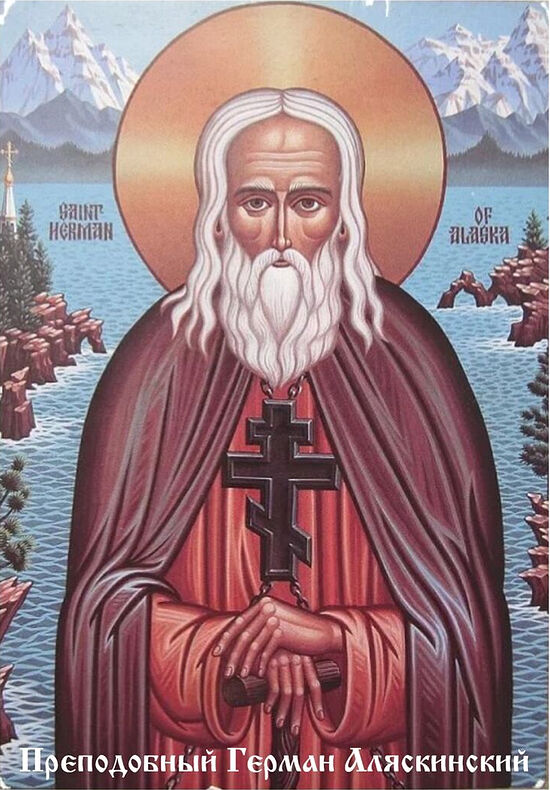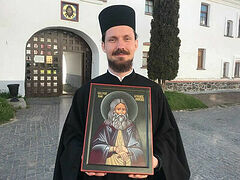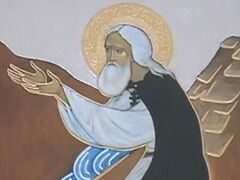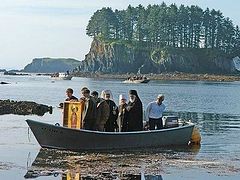After fifteen years of the Venerable Herman's stay in Valaam, the Lord called the humble monk to apostolic ministry and sent him to preach the Gospel and baptize pagans of the sparsely populated and harsh region of Alaska and the surrounding islands of North America. To this end in 1793 a spiritual Mission was established and called the Kodiak Mission, with its center on Kodiak Island. Archimandrite Joasaph (Bolotov) from Valaam Monastery was appointed head of the Mission. Among the other members of the Mission were five more monks of Valaam Monastery, including the Venerable Herman, whom the Lord ordained to labor longer and more fruitfully in spreading the Gospel than any other Mission member.
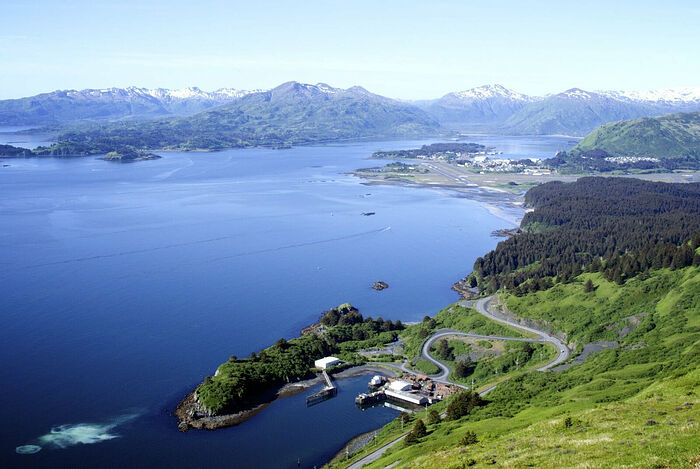 Kodiak Island. Photo: priroda.club
Kodiak Island. Photo: priroda.club
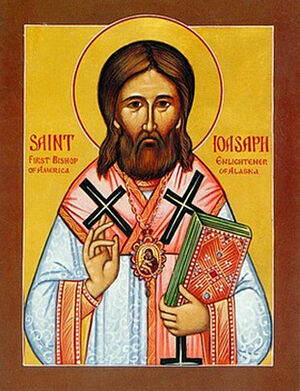 St. Ioasaph (Bolotov) The Mission did not last under the leadership of Archimandrite Joasaph: During a storm in 1799, His Eminence Joasaph, who had already been appointed bishop, and his companions perished in the waves of the ocean. There were only four missionaries left on the island. In 1804, only one hieromonk of St. Alexander Nevsky Lavra, Gideon, was sent to help the survivors. He led the Mission for a while. He took care of a school for the children of baptized Aleuts.
St. Ioasaph (Bolotov) The Mission did not last under the leadership of Archimandrite Joasaph: During a storm in 1799, His Eminence Joasaph, who had already been appointed bishop, and his companions perished in the waves of the ocean. There were only four missionaries left on the island. In 1804, only one hieromonk of St. Alexander Nevsky Lavra, Gideon, was sent to help the survivors. He led the Mission for a while. He took care of a school for the children of baptized Aleuts.
In 1807, Hieromonk Gideon left the missionaries forever, entrusting the Mission to St. Herman, who remained a spiritual father, pastor and guide of human souls until his death.
There were plans to ordain the saint a hieromonk and elevate him to the rank of archimandrite, but the humble monk refused any elevation and remained a simple monk until the end of his earthly life.
From 1807 on he was in charge of a school with twenty boys. The elder taught them how to read and write, he taught them the Law of God, sacred history, church singing, and agricultural skills. The Venerable Herman was a true good pastor for the local populace and protected them as best he could from evil and rapacious people who saw the islanders only as an object for cruel exploitation.
Therefore, it would not have been surprising if the converts had rejected the faith of the newcomers, who were increasingly beginning to act as oppressors, and had returned to their superstitions. It is a great achievement of the Venerable Herman that this did not happen.
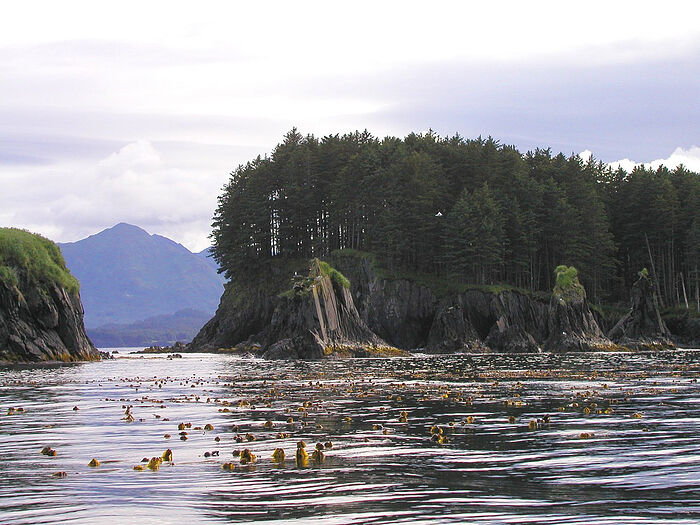 Spruce Island, Alaska. Photo: Wikipedia
Spruce Island, Alaska. Photo: Wikipedia
Steadfastly and persistently, having no support other than his fervent faith, the elder continued to intercede for the offended and oppressed, seeing in this his duty and vocation, the essence of which he expressed in astonishingly simple words: “I am the lowest servant of these peoples and their nurse.” The grace of God that filled St. Herman’s soul transformed the hearts of people who contacted with him. The Venerable Herman received many spiritual gifts from God, including the vision of angels and evil spirits. One day his prayers stopped a flood, another time, a fire. The elder had the gift of prophecy. Thus, he predicted that America would have its own Orthodox bishop, which soon came true. In 1840, a diocese was established on the North American continent and St. Innocent (Veniaminov) became its head.
Probably in 1835, the Venerable Herman went totally blind and until his repose led a solitary life, rarely leaving his cell and unceasingly remaining in labors of fasting and prayer. He revealed to his spiritual children the time of his death and the circumstances of his burial. On November 15, 1836, the holy elder asked for candles to be lit in front of the icons and the Acts of the Holy Apostles to be read. While listening to the reading about the labors of the holy evangelists, the Venerable Herman passed from earthly labors to Heavenly rest.

